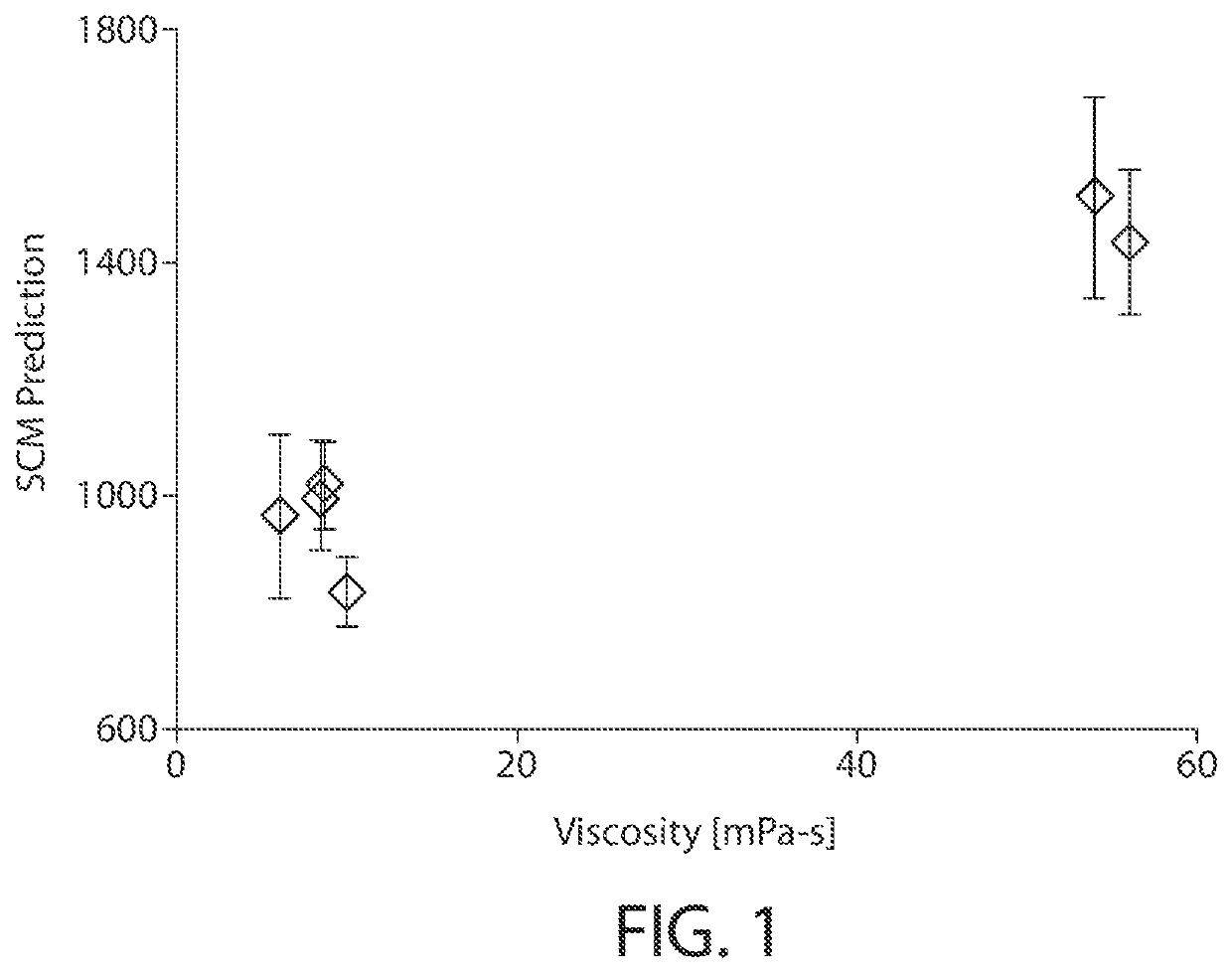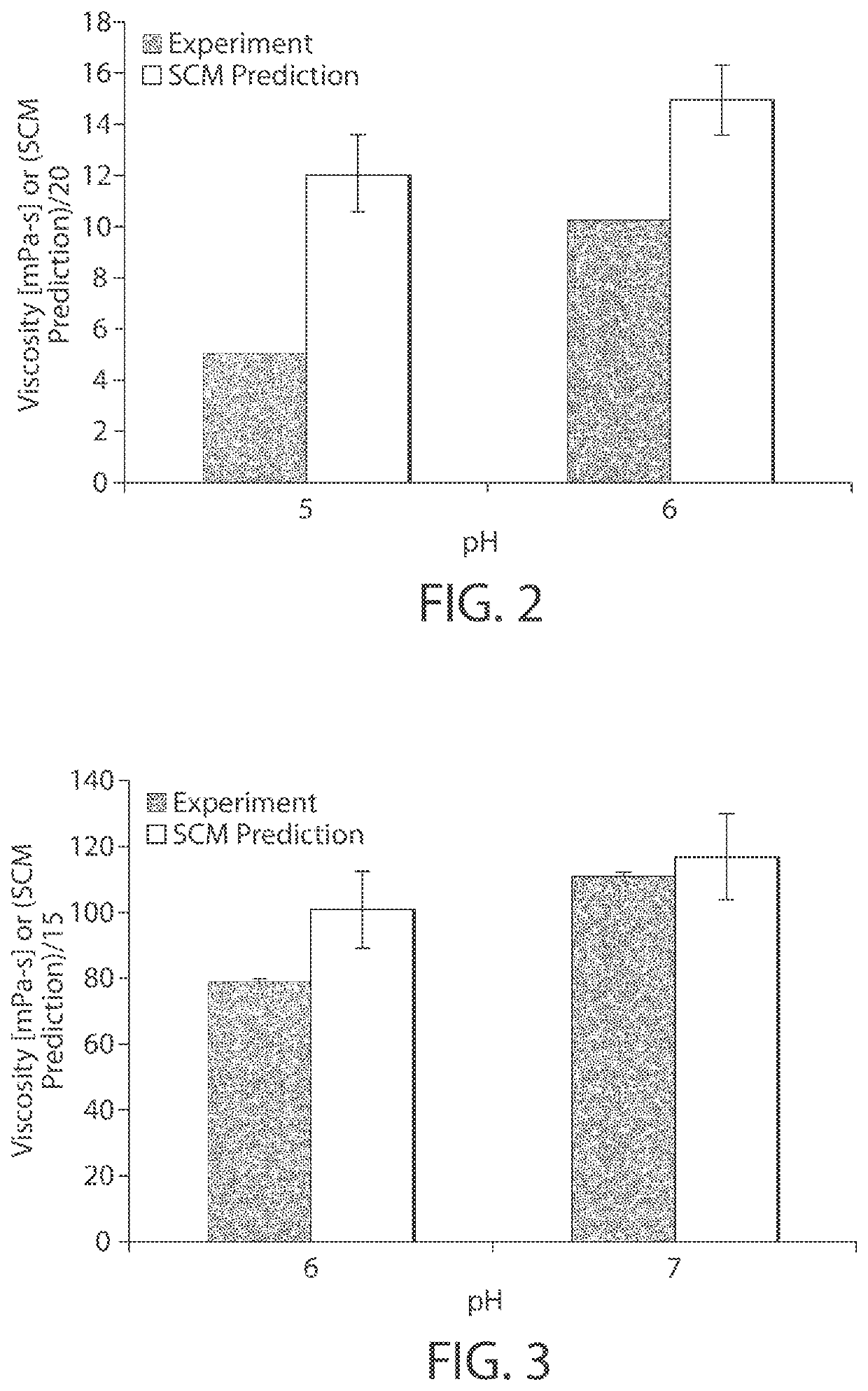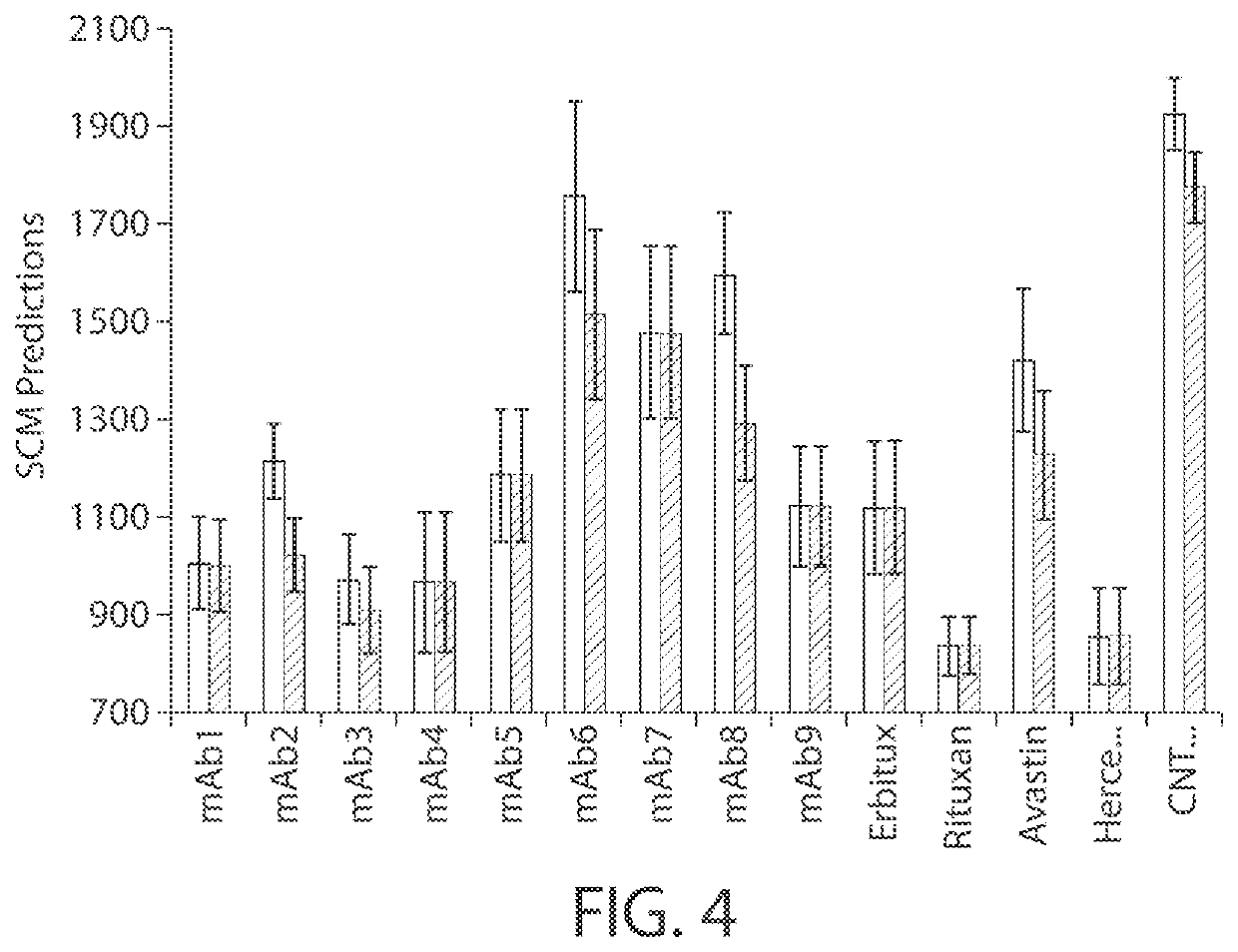Computer-implemented methods of determining protein viscosity
a protein viscosity and computer technology, applied in the direction of indirect flow property measurement, instruments, molecular structures, etc., can solve the problems of limited approach, cumbersome and slow use, limited approach accuracy to no-better-than-average, etc., to achieve convenient, rapid and inexpensive way
- Summary
- Abstract
- Description
- Claims
- Application Information
AI Technical Summary
Benefits of technology
Problems solved by technology
Method used
Image
Examples
Embodiment Construction
[0025]Compositions containing proteins (e.g., monoclonal antibodies) are, in many instances, injected or infused via subcutaneous injection. Subcutaneous injection, in many instances, conveniently can be performed outside of a clinical setting and without a medical practitioner's assistance. However, viscoelastic resistance to hydraulic conductance in the subcutaneous tissue, backpressure generated upon injection, and perceptions of pain all limit subcutaneous injection volumes to small volumes sometimes on the order of approximately 2 ml. Therefore, protein compositions intended for subcutaneous injection usually are highly concentrated and thus also highly viscous. It is this latter property that further limits their utility.
[0026]Described herein are computer-based utilities, referred to as viscosity prediction facilities, for analyzing computer-generated information regarding a protein of interest (e.g., an antibody), inferring anticipated structural properties of the protein, a...
PUM
| Property | Measurement | Unit |
|---|---|---|
| viscosity | aaaaa | aaaaa |
| viscosity | aaaaa | aaaaa |
| distance | aaaaa | aaaaa |
Abstract
Description
Claims
Application Information
 Login to View More
Login to View More - R&D
- Intellectual Property
- Life Sciences
- Materials
- Tech Scout
- Unparalleled Data Quality
- Higher Quality Content
- 60% Fewer Hallucinations
Browse by: Latest US Patents, China's latest patents, Technical Efficacy Thesaurus, Application Domain, Technology Topic, Popular Technical Reports.
© 2025 PatSnap. All rights reserved.Legal|Privacy policy|Modern Slavery Act Transparency Statement|Sitemap|About US| Contact US: help@patsnap.com



